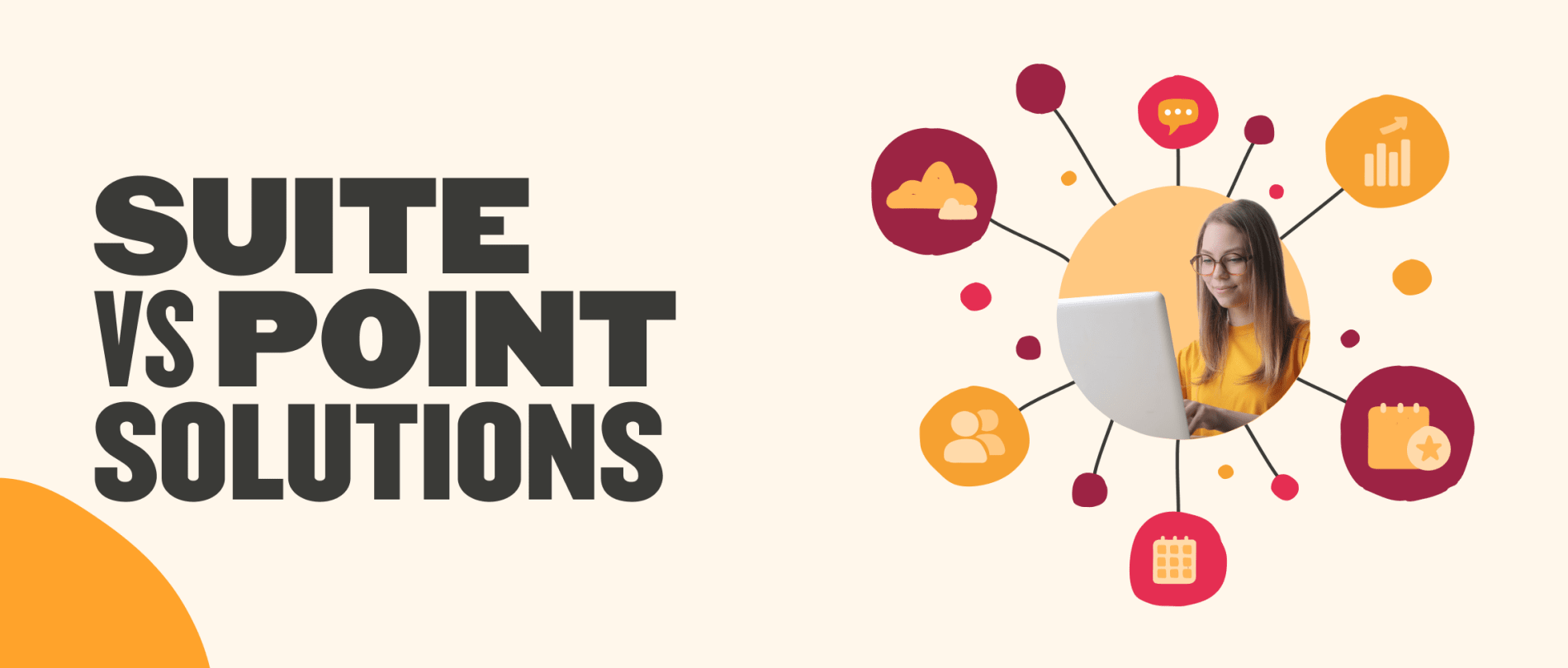The HR technology field is booming right now—indicative of the evolving scope and responsibilities of HR leaders. Following the pandemic and the shift to remote and hybrid work, HR tech matters more than ever. HR and employee experience platforms fill a void by helping employees connect and maintain active involvement in the company, even if they only step foot into the office once a week (or never).
But for all of the opportunities that new technology presents, it also comes with an asterisk. “Companies are throwing money at HR tools right now searching for ways to transform their workforces, make people more productive, and improve quality of hire, skills development, and employee engagement and retention,” says HR thought leader Josh Bersin. “But this is starting to create chaos.”
Bersin notes that the average large company now has 9.1 core talent applications (up from 7 in 2018). With all of the systems available for HR teams—from point solutions that track engagement or manage timesheets to suite solutions that do everything from performance reviews to engagement surveys—it’s essential to assess the needs of your company and employees before choosing a solution.
Here are four things to think about before settling on a point or suite solution.
1. What’s the problem?
The HR department handles everything from recruiting to engagement to payroll to compensation. That’s a lot of moving parts, which is why it’s essential that everything stays organized, streamlined and that the system makes efficient use of the HR team’s time. A suite solution provides the obvious answer. The features of a one-stop-shop HR platform are robust enough to cover all areas of the employee lifecycle and act as a central hub for the HR team. The beauty of these suite solutions is that they are customizable, and HR leaders can tailor the features to how they run their organizations. And, if you choose a platform with a robust integration marketplace, there’s nothing that you’re missing from a suite solution.
2. What’s the ROI of implementing a new tool?
Like anything else in your company’s tech stack, a new tool needs to prove its value. ROI for an HR department can take on many forms—from saving the HR team time and money to providing increased engagement, retention, or employee satisfaction.
Think about how the tools you implement will make employees’ work lives better. “HR software used to be designed for HR managers: today, it is designed for employees,” says Bersin. “That means that if it is not easy to use, easy to modify, and embedded into the flow of work – it won’t get used much at all.”
A suite solution ensures easy adoption. Instead of having to learn how to use different systems, your employees only need to become proficient in navigating one. The more tools you ask your employees to engage with, the less they will get to intimately know these tools and use them to their full potential.
3. What are your budget and priorities?
The number of point solutions out there are endless—survey and engagement tools, employee recognition platforms, performance review solutions, and more. The cost of these platforms can quickly add up and overtake your entire budget. Plan out your department’s budget and priorities, and then assess your tech options based on nice-to-haves and need-to-haves. With the right integrations, a suite solution will likely tick off most if not all of your priorities.
Since point solutions are built to solve one problem and solve it really well, your HR team will need to implement a few point solutions to solve all of their needs. This strategy can lead to another major headache—lots of systems that individually do a great job, but can’t easily communicate or share data. The challenges this creates can range from the simple administrative nightmare of re-entering the same data into multiple systems to bigger problems, like having data scattered across systems, making it difficult to get useable, accurate, and actionable data. As you continue to add more point solutions, this data integration problem becomes even more complicated.
Recommended For Further Reading
4. What’s your growth trajectory?
If your company plans on growing and scaling, you need an HR platform that will grow with you. With a suite solution, all your data is organized in one place, making it accessible, consistent, and accurate—reducing friction as you scale or prepare for due diligence. As you hire more employees, expand into new geos, or support new ways of working, your HR team will need a platform that will aid the process rather than get in the way. For example, when you move into new global sites, your systems will have to support different currencies, languages, regulations. A suite solution can support growth better by centralizing all of your people data (one source of truth) and easily changing between languages and currencies based on the settings you choose per location.
HR tech matters more than ever this year
HR leaders today have the option to go with a single suite of products or to opt for point solutions and work to integrate them in order to share data across platforms. If your HR department has specific challenges that need to be addressed, point solutions can provide the answer. Today you can buy platforms that track employee emails, identify strong performers, provide AI career coaching, and connect remote workers. But for most HR departments, who need a swiss army knife of products and features, a suite solution is the way to go.


